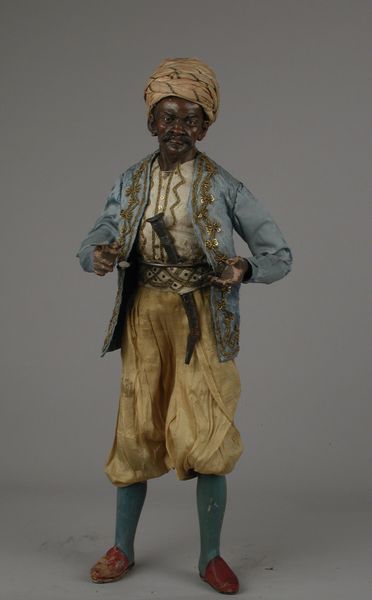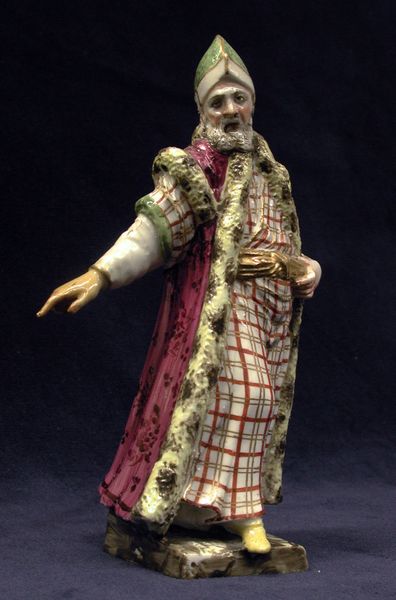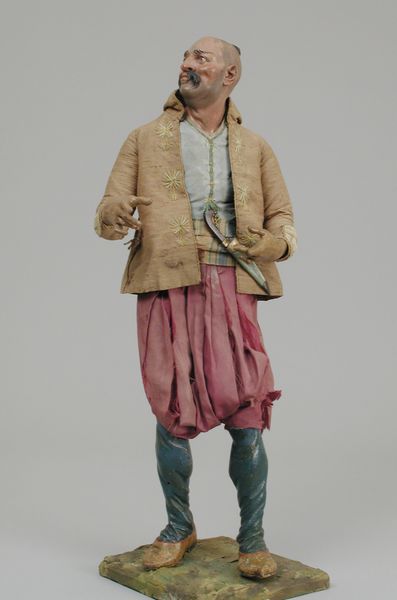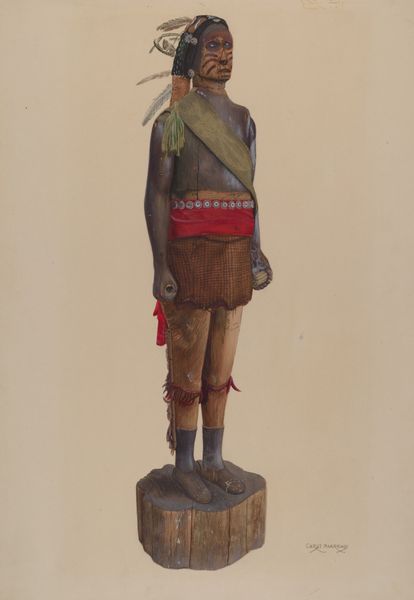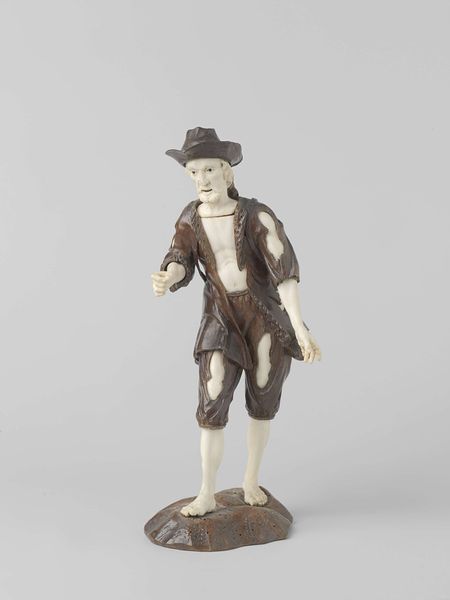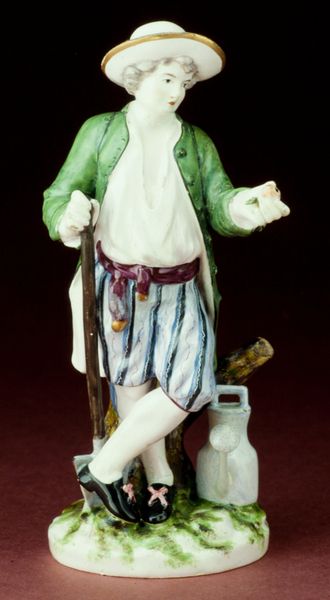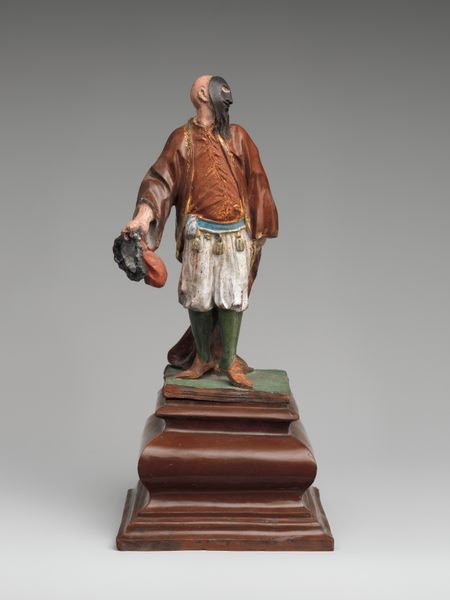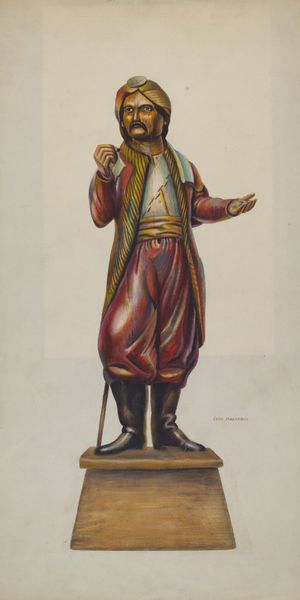
Dimensions: a) H. of figure: 15 3/8 in. (39.1 cm.); b) L. 4 7/8 in. (12.4 cm); c) Diam. 2 1/4 in. (5.7 cm)
Copyright: Public Domain
Curator: This sculpture is titled "King's Attendant", crafted by Giuseppe Sanmartino sometime between 1750 and 1799. Editor: Striking piece! The baroque flair, the ornamentation... there’s almost a sense of theatrical drama just in the pose. The lines of his body, from his gesturing hand to the fold of his breeches, all contribute to a lively, momentary feel. Curator: Yes, Sanmartino was a master of the Neapolitan Baroque style, and these figures—often part of elaborate nativity scenes—offer us a glimpse into the social fabric and cultural aesthetics of 18th-century Naples. It shows not just the biblical narrative, but also the world of the people who made and viewed them. Editor: I am particularly captivated by the texture contrasts. The crisp delineation of his clothing with those swirling folds really draws your attention. Note, too, how the sculptor has varied his cutting strokes in each section for a unique finish to each aspect of the character. Curator: And the materials! We can only guess what some are as there is little on the medium. It gives us insight into how art patrons expressed status, even in religious settings. These Nativity scenes weren’t just for churches. Aristocratic families vied for the most elaborate and expensive displays. Editor: Absolutely. Even within the relatively static form of sculpture, you can find real dynamic contrasts. It’s almost as though the man is about to step into our space, a fleeting capture of character within enduring materials. The open jacket further emphasises his openness and eagerness to participate, or at least guide us into the coming of his King. Curator: And thinking of what materials the sculpture contains opens avenues to discussing colonialism, trade routes, even the economics of religious devotion during this era. The figures act as microcosms reflecting broad trends of the period. Editor: I can see how all the factors played out from creation to patron through close observation. Beautiful synthesis. Curator: Likewise. By focusing in closely at material, texture, and line we can learn a lot more from this piece of historical artwork than its origins.
Comments
No comments
Be the first to comment and join the conversation on the ultimate creative platform.
